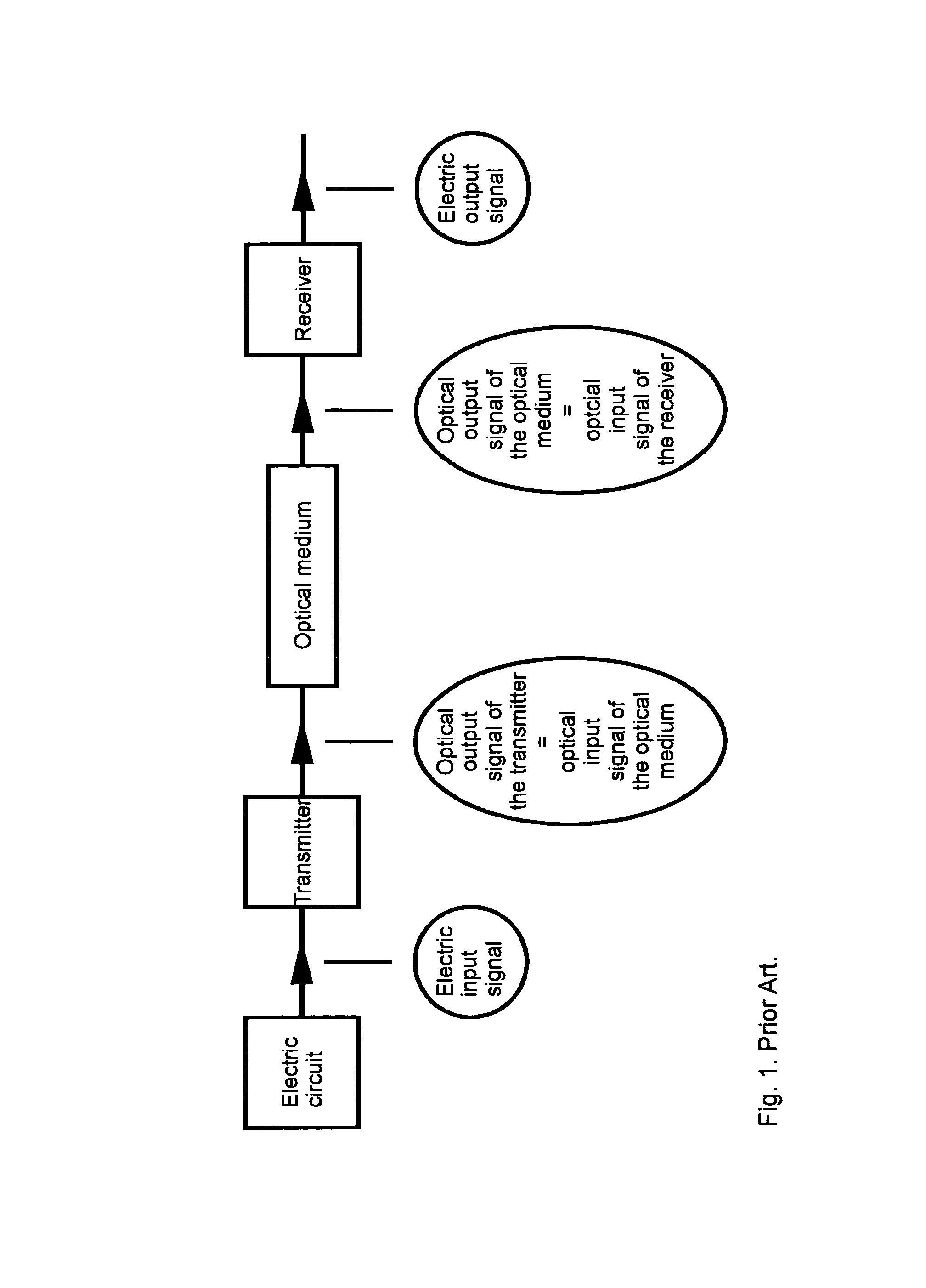Method for encoding and decoding of optical signals
a technology of optical signals and encoding methods, applied in electromagnetic transmission, electrical equipment, transmission, etc., can solve problems such as possible errors in information transfer, multi-level encoding faces severe problems in generating multi-level optical pulses, and the repetition rate of pulses is usually limited, and achieves robust multi-level encoding of optical signals.
- Summary
- Abstract
- Description
- Claims
- Application Information
AI Technical Summary
Benefits of technology
Problems solved by technology
Method used
Image
Examples
Embodiment Construction
[0034]The present invention teaches using a fast transmitter and a slow receiver. Encoding in the fast transmitter results in generating optical pulses having preferably the same amplitude but different duration. These are “optical output signals of the transmitter”, according to FIG. 1. The same is valid for “optical input signals of the receiver” coming to the receiver. The slow receiver has the characteristic response time preferably longer than the pulse duration. Then it basically integrates the coming optical pulses over time. Then a longer optical pulse will result in an electric pulse having a larger amplitude.
[0035]In one of the embodiments of the present invention, the electric response of the receiver can be written as follows:
[0036]Ielectric(t)=∫-∞tK(t-τ)Ioptical(τ)ⅆτ,(1)
where K(t−τ) is a response function of the receiver characterized by a response time tresponse. In one of practical embodiments, the response function can be written as an exponential,
[0037]K(t-τ)...
PUM
 Login to View More
Login to View More Abstract
Description
Claims
Application Information
 Login to View More
Login to View More - R&D
- Intellectual Property
- Life Sciences
- Materials
- Tech Scout
- Unparalleled Data Quality
- Higher Quality Content
- 60% Fewer Hallucinations
Browse by: Latest US Patents, China's latest patents, Technical Efficacy Thesaurus, Application Domain, Technology Topic, Popular Technical Reports.
© 2025 PatSnap. All rights reserved.Legal|Privacy policy|Modern Slavery Act Transparency Statement|Sitemap|About US| Contact US: help@patsnap.com



